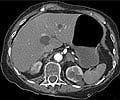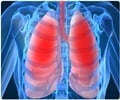
The study examined patients hospitalized in Ontario, a province with a population of approximately 12.8 million. The smoking prevalence among Ontarians aged 15 years and older was 15.4% in 2009. The smoking prevalence among Canadian hospital populations is higher, at 20%. Consequently, on a given day in Ontario, approximately 6,400 of the province's 32,000 hospital beds are occupied by current smokers. Healthcare is publicly funded through the Ontario Health Insurance Plan, where medically necessary services including primary care and specialty care, hospital stays, diagnostic investigations and surgical procedures are available at no cost to residents. There are 211 hospital sites in Ontario that recorded an estimated 987,757 acute care inpatient admissions in 2009.
The study shows that from the hospital payer's perspective, delivery of the Ottawa Model for Smoking Cessation (OMSC) can be considered cost effective – the program costs a mere $20 to help one person quit smoking, $103 to help patients avoid a day spent in hospital, $36 to gain one year of life, and $68 to gain one quality-adjusted (i.e., healthy) year of life. In the first year, the researchers calculated that provision of the OMSC to 15,326 smokers would generate 4,689 quitters, and would prevent 116 re-hospitalizations, 923 hospital days, and 119 deaths. Results were robust within numerous sensitivity analyses. An important consideration is the relatively low intervention cost compared to the reduction in costs related to readmissions for illnesses associated with continued smoking.
"Not surprisingly, these results indicate that the economic burden to the hospital system of continued smoking is significant," said Kerri-Anne Mullen, lead author and Network Manager for OMSC at the University of Ottawa Heart Institute. "Hospitalization is an opportune time to initiate smoking cessation treatment as smokers are frequent and high cost users of the healthcare system and are often highly motivated to quit smoking during their admission."
An estimated $547 million is spent each year in Ontario on hospitalizations for acute myocardial infarction, unstable angina, heart failure, and chronic obstructive pulmonary disease (COPD) alone. The study estimates that provision of the OMSC intervention to smokers admitted with these issues would represent 0.20% of this cost, yet could result in several individual and health system benefits and, in the case of COPD patients, could result in actual cost savings.
Source-Eurekalert















